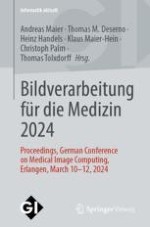Seit mehr als 25 Jahren ist der Workshop "Bildverarbeitung für die Medizin" als erfolgreiche Veranstaltung etabliert. Ziel ist auch 2024 wieder die Darstellung aktueller Forschungsergebnisse und die Vertiefung der Gespräche zwischen Wissenschaftlern, Industrie und Anwendern. Die Beiträge dieses Bandes - viele davon in englischer Sprache - umfassen alle Bereiche der medizinischen Bildverarbeitung, insbesondere die Bildgebung und -akquisition, Segmentierung und Analyse, Visualisierung und Animation, computerunterstützte Diagnose sowie bildgestützte Therapieplanung und Therapie. Hierbei kommen Methoden des maschinelles Lernens, der biomechanischen Modellierung sowie der Validierung und Qualitätssicherung zum Einsatz.
